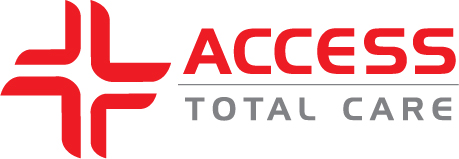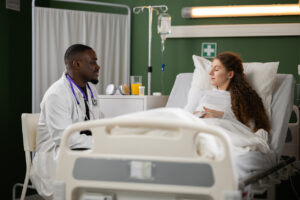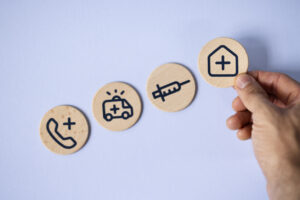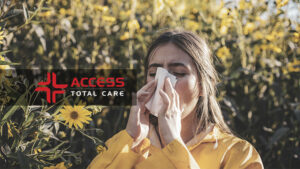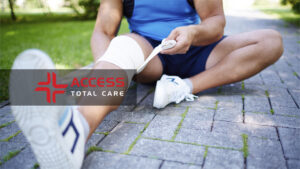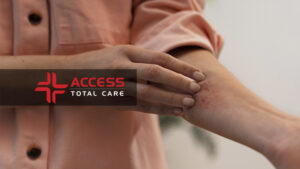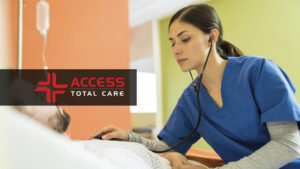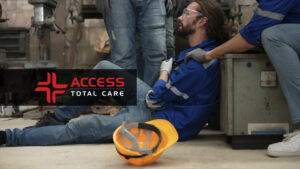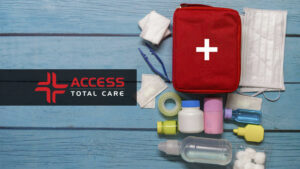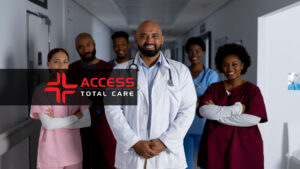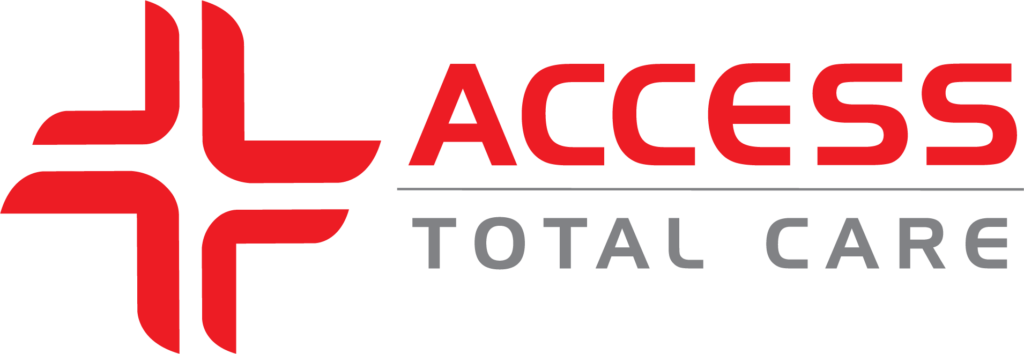The holiday season is a time of joy, celebration, and togetherness. It’s a time when families and friends gather to create lasting memories. However, non-emergency medical issues can arise amidst the festivities, potentially dampening the holiday spirit. Knowing how to handle non-emergency medical issues during the holidays effectively can make a significant difference.
Here, we provide a comprehensive guide on what to do when non-emergency medical issues occur during the holidays, emphasizing the role of urgent care, walk-in clinics, and immediate care facilities.
Understanding Non-Emergency Medical Issues
Non-emergency medical issues are health problems that require attention but are not life-threatening. These issues can include minor injuries, illnesses, and conditions such as:
- Minor cuts and burns
- Sprains and strains
- Cold and flu symptoms
- Minor allergic reactions
- Mild asthma attacks
- Urinary tract infections
- Ear infections
- Minor rashes and skin infections
These conditions can often be managed without a trip to the emergency room, which is typically reserved for more serious and life-threatening situations.
Why Not Go To the Emergency Room?
During the holidays, emergency rooms (ERs) can become extremely crowded. People often visit the ER for issues that could be addressed elsewhere, leading to long wait times and strained resources. Emergency rooms are best suited for severe conditions such as heart attacks, strokes, severe injuries, and other life-threatening emergencies.
For non-emergency issues, seeking alternative care options like urgent care centers, walk-in clinics, or immediate care facilities can save time, reduce stress, and ensure that emergency resources remain available for those in dire need.
The Role of Urgent Care Centers
This is where urgent care centers come to the rescue. When you need medical care but it’s not worth it to go to the emergency room, urgent care centers are there to help, even during the holidays.
Urgent care centers are healthcare facilities that provide immediate attention for non-life-threatening conditions. They bridge the gap between primary care doctors and emergency rooms.
These centers are typically open after regular business hours, including evenings, weekends, and holidays, making them an excellent option for dealing with non-emergency medical issues during the holidays.
Benefits of Urgent Care Centers
Here are some of the benefits of urgent care centers:
- Accessibility: Urgent care centers are often located in convenient locations, making them easily accessible.
- Shorter Wait Times: Compared to ERs, urgent care centers usually have shorter wait times.
- Comprehensive Care: They can handle various medical issues, from minor injuries to illnesses.
- Cost-Effective: Visiting an urgent care center is generally less expensive than a trip to the ER.
When to Visit an Urgent Care Center
Consider visiting an urgent care center if you experience any of the following during the holidays:
- Minor cuts that may need stitches
- Sprains and strains
- Minor fractures (e.g., a broken finger or toe)
- Cold or flu symptoms
- Mild asthma or allergy symptoms
- Minor burns
- Urinary tract infections
Walk-In Clinics: Convenient and Quick
Walk-in clinics are healthcare facilities where you can receive medical care without an appointment. They are typically staffed by nurse practitioners or physician assistants and can handle a variety of minor medical issues.
Benefits of Walk-In Clinics
- No Appointment Necessary: Walk-in clinics accept patients on a first-come, first-served basis.
- Convenient Locations: Often located in retail stores, pharmacies, and shopping centers.
- Quick Service: They provide fast and efficient care for minor health concerns.
When to Use a Walk-In Clinic
Walk-in clinics are ideal for addressing minor medical issues such as:
- Common colds and flu
- Minor cuts and abrasions
- Skin rashes and infections
- Vaccinations and immunizations
- Routine physical exams
Immediate Care Facilities: A Middle Ground
Immediate care facilities are similar to urgent care centers but often provide a broader range of services. They are equipped to handle more complex medical issues that don’t require the full resources of an emergency room.
Benefits of Immediate Care Facilities
- Extended Hours: Like urgent care centers, immediate care facilities are open during evenings, weekends, and holidays.
- Advanced Services: They often have more diagnostic equipment and can provide more advanced care.
- Skilled Staff: Staffed by experienced medical professionals, including doctors and nurses.
When to Choose Immediate Care
Opt for an immediate care facility if you need treatment for:
- Moderate injuries
- Severe cold or flu symptoms
- Mild to moderate asthma attacks
- Minor to moderate burns
- Suspected fractures
Preparing for the Holidays
Being prepared can make handling non-emergency medical issues during the holidays much more accessible. Here are some tips to ensure you’re ready:
- Know Your Options: Before the holiday season begins, identify the nearest urgent care centers, walk-in clinics, and immediate care facilities and list their addresses, phone numbers, and operating hours.
- Stock Up on Essentials: Keep a well-stocked first aid kit at home, including bandages, antiseptics, over-the-counter pain relievers, and common medications for colds, allergies, and other minor ailments.
- Update Medical Records: Ensure your medical records are up-to-date and easily accessible. This can be especially important if you need to visit a new healthcare provider.
- Insurance Information: Keep your health insurance information handy. Verify that your insurance covers visits to urgent care centers and walk-in clinics.
- Health Precautions: Take preventive measures to stay healthy, such as getting vaccinated for the flu, practicing good hand hygiene, and maintaining a healthy diet.
Tips for Visiting Urgent Care, Walk-In Clinics, and Immediate Care Facilities
When you decide to visit an urgent care center, walk-in clinic, or immediate care facility, here are some tips to ensure a smooth experience:
- Bring Identification: Carry a photo ID and your health insurance card.
- List of Medications: Bring a list of any medications you are currently taking, including dosages and schedules.
- Medical History: Be prepared to provide a brief medical history, including any chronic conditions, allergies, and previous surgeries.
- Payment Method: Bring a payment method, as you may need to cover copays or out-of-pocket expenses.
- Expect Wait Times: While these facilities typically have shorter wait times than ERs, you may still need to wait, especially during peak holiday hours.
Staying Safe and Healthy During the Holidays
Prevention is always better than cure. Here are some additional tips to stay safe and healthy during the holidays:
- Practice Safe Food Handling: Ensure all food is cooked properly, avoid cross-contamination, and refrigerate leftovers promptly to prevent foodborne illnesses.
- Stay Hydrated: Drink plenty of water, especially if you’re consuming alcohol or spending time in warm, indoor environments.
- Moderate Alcohol Consumption: Drink alcohol in moderation to avoid accidents and health issues related to overconsumption.
- Stay Active: Engage in physical activities to keep your body moving and reduce stress.
- Manage Stress: Holidays can be stressful. To control stress levels, practice relaxation techniques such as deep breathing, meditation, or yoga.
Know How to Handle Non-Emergency Medical Issues During the Holidays
Handling non-emergency medical issues during the holidays doesn’t have to be daunting. By understanding the roles of urgent care centers, walk-in clinics, and immediate care facilities, you can make informed decisions about where to seek help. Preparing in advance, knowing your options, and taking preventive measures can ensure you and your loved ones enjoy a safe, healthy, and joyful holiday season.
Remember, when non-emergency medical issues arise, there’s no need to let them ruin your festivities. With the right knowledge and resources, you can handle these situations easily and safely.
